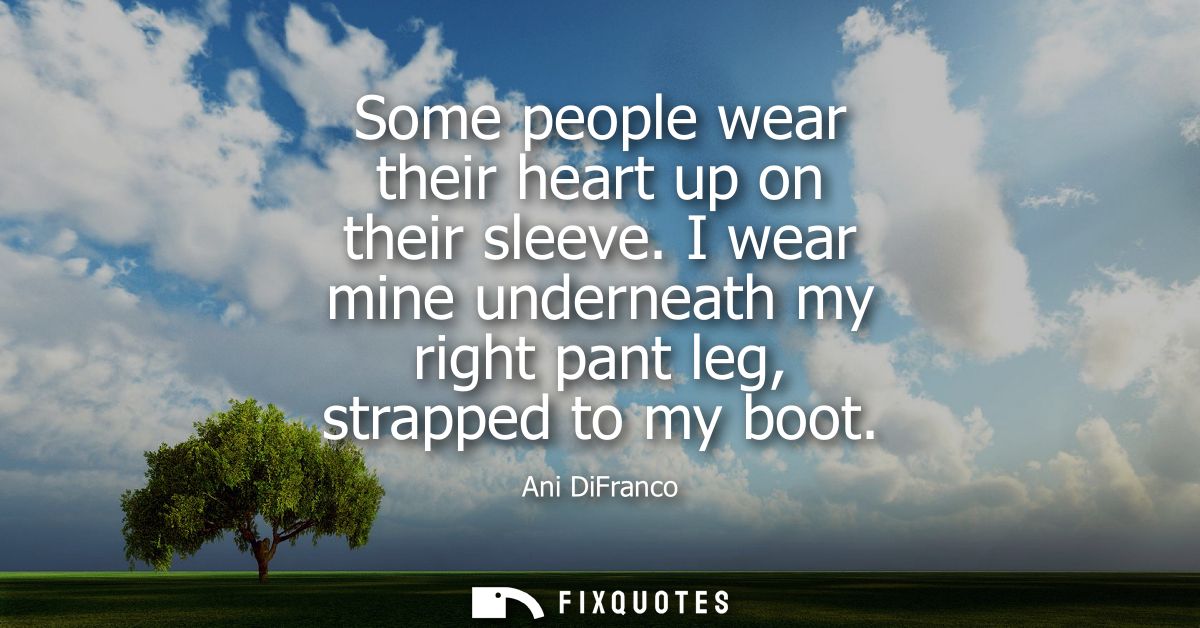"Some people wear their heart up on their sleeve. I wear mine underneath my right pant leg, strapped to my boot"
About this Quote
Ani DiFranco’s lyric explores the contrast between openness and guardedness in how people express their emotions. Traditionally, to “wear your heart on your sleeve” means to display your feelings transparently, unafraid of vulnerability. Some embrace this, letting the world see every joy and sorrow unfiltered. DiFranco counters this with her own imagery, her heart isn't easily seen, instead hidden “underneath my right pant leg, strapped to my boot.” The placement is deliberate: underneath, guarded, close to the ground and harder to spot. The boot, often associated with toughness or protection, suggests she keeps her emotions shielded, only accessible if she chooses to reveal them.
This metaphor raises questions about trust and self-preservation. Perhaps prior experiences have taught her caution, making her hesitant to reveal her true feelings openly. For DiFranco, the heart’s protection becomes paramount, tethered securely and concealed from casual observers. She acknowledges that she still carries her heart, it hasn’t been discarded or ignored, but its position reflects a desire for boundaries and safety. The heart is present, undeniable and essential, but not offered freely to the world.
Her imagery also touches on individuality in emotional expression. Not everyone is comfortable showing vulnerability publicly. Some navigate life more guardedly, preferring control over who witnesses their emotional truths. DiFranco’s lyric respects this difference, suggesting strength in reservation. To conceal the heart isn’t necessarily a weakness; sometimes, it is a method of survival, or a means to maintain autonomy.
The juxtaposition in her metaphor invites empathy toward those who seem distant. One’s reluctance to share emotions might stem from a need for protection rather than indifference. DiFranco’s words capture the nuanced choices individuals make in how, when, and to whom they entrust their deepest selves.
More details
About the Author

